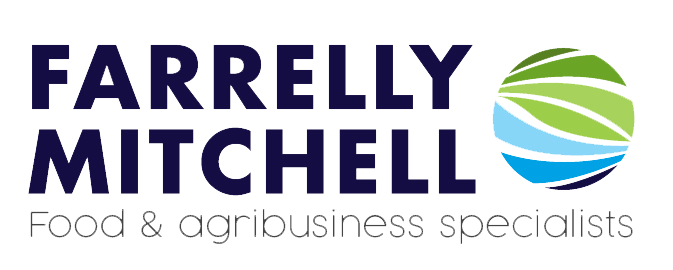The global race to commercialise novel foods has reached an inflection point. For decades, securing EU novel food status has been considered the gold standard, a badge of scientific rigour that would open doors worldwide. This conventional wisdom, deeply embedded in boardrooms and venture capital pitch decks, is now being systematically challenged. However, a closer look at global real-world application data suggests that pursuing EU approval first is a high-risk, low-velocity strategy that can fatally compromise first-mover advantage.
New analysis of 292 applications for novel food status submitted to the European Food Safety Authority (EFSA) between 2018 and 2024 exposes the true cost of the EU-first orthodoxy. Whilst the official timeline promises a decision within 16 months, the actual average time to receive an EFSA scientific opinion stands at 2.56 years. For businesses where speed to market often determines survival, this represents a fundamental strategic vulnerability.
The myth of the 16-month timeline
The discrepancy between expectations and reality in the EU’s novel food status process stems from a procedural mechanism that fundamentally distorts the regulatory timeline. When EFSA requires additional information, the nine-month review clock stops entirely. These timeout events, formally known as Additional Data Requests (ADRs), account for nearly half the total evaluation time. In fact, a company might receive multiple ADRs during review, each potentially adding months to the process.
This systematic underestimation of timelines has profound implications for business planning. Companies that budget for a 16 month approval process can find themselves trapped in a regulatory quagmire that can extend from months to years for complex applications, with some cases taking over half a decade. The financial burden can be significant and even catastrophic for early-stage ventures.
The EU’s approach reflects a deeply precautionary philosophy where the burden of proof rests entirely with the applicant to demonstrate safety from first principles. This manifests in requirements for extensive toxicological studies, including mandatory genotoxicity testing and ninety-day rodent studies, regardless of the food’s similarity to existing products. EFSA’s latest guidance, applicable from February 2025, adds more data requirements and is only likely to exacerbate delays.
Canada’s risk-tiered alternative
Canada presents a fundamentally different regulatory philosophy that challenges the EU’s one-size-fits-all approach. Health Canada operates a product-centric, risk-tiered system where the trigger for novel food status only occurs where the final product exhibits a “major change” or lacks a “history of safe use” compared to its conventional counterpart. This pragmatic approach allows innovations deemed substantially equivalent to existing foods to proceed to market with significantly lower regulatory hurdles.
The Canadian system’s efficiency is evident in its timelines. Health Canada commits to a standard service time of 410 calendar days for novel food assessments, with an initial 45 day review period followed by structured ninety-day cycles for any additional information requests. Unlike the EU’s indefinite ADR mechanism, Canada’s process maintains momentum through iterative dialogue between regulators and applicants. In fact, for certain well-characterised innovations like retransformant plants (genetically modified plants that have undergone rounds of transformation), Health Canada offers an expedited review process targeting just 120 days.
This flexibility also extends to scientific requirements. While the EU mandates comprehensive toxicological packages regardless of context, Health Canada applies a case-by-case approach. For a novel protein demonstrated to be readily digestible and non-toxic at high doses, Health Canada may not require the ninety-day sub-chronic studies that EFSA would. This risk-proportionate approach reduces both time and cost without compromising safety.
The implications are clear. Companies can leverage Canada’s faster, more flexible system to achieve initial market entry, generate revenue and build real-world safety data, all of which can subsequently strengthen applications in more demanding jurisdictions.
Saudi Arabia’s fast-follower advantage
The Kingdom of Saudi Arabia has emerged as an unexpected accelerator in the novel foods landscape, operating what might be termed a “gatekeeper system with fast-track potential”. The Saudi Food and Drug Authority (SFDA) explicitly require applicants to declare the status of any applications made to other international regulatory authorities and to provide copies of their scientific opinions. This requirement creates a powerful leverage opportunity for companies with prior approvals.
With an estimated timeline of four to six months for approvals on novel food status, Saudi Arabia offers rapid access to the GCC market of over 50 million consumers. The kingdom’s approach balances efficiency with rigour; whilst maintaining high safety standards and additional requirements such as Halal certification, the SFDA’s willingness to consider prior authorisations from bodies like EFSA or Health Canada as primary evidence significantly streamlines the review process.
This creates a compelling second step in a sequenced strategy. A company that secures Canadian approval can potentially achieve Saudi market entry within six months, establishing a presence in two major markets whilst EU review continues. The generated revenue and market data from these early entries provide not only financial sustainability but also powerful supporting evidence for the eventual EU application.
The new novel food status playbook
The evidence suggests that rather than defaulting to European processes as the primary method for obtaining novel food status, companies should consider utilising a sequenced approach that prioritises speed to market while still building towards global approval. This might take the form of a Canada-Saudi-EU sequence, which leverages each approval to strengthen subsequent applications.
This sequencing strategy has the added benefits of enabling companies to refine production processes, build brand awareness, generate revenue and gather consumer feedback while more lengthy approval processes are ongoing. Ultimately, the real-world consumption data generated during this stage should provide powerful supporting evidence for subsequent applications, potentially reducing the likelihood of ADRs which can plague EU submissions.
Even accounting for the additional cost of multiple applications, the economics often strongly favour a sequenced approach. This approach also provides crucial strategic flexibility; should unexpected regulatory challenges arise in one jurisdiction, companies with applications across multiple markets can pivot resources to more promising regions. This reduces concentration risks and provides more pathways to commercial success.
Implications for policymakers
Whilst the EU’s rigorous approach ensures high safety standards, the practical effect of lengthy timelines presents uncomfortable truths for European regulators. Current processes and procedures are likely to deter innovation and investment. The European food technology sector risks falling behind, as companies will choose to develop and commercialise their innovations elsewhere first.
The UK has retained EU regulations regarding novel food status post-Brexit. However, the UK’s Food Standards Agency is aware that the current authorisation process is cumbersome, lengthy, and lacking in transparency and it is actively considering reforms. Proposed changes include eliminating the requirement for statutory instruments to finalise authorisations. This step would reduce timelines by three to six months. Given that the UK is a net importer of food, more fundamental changes may also happen over time.
For Saudi Arabia and other Gulf states, an opportunity currently exists to establish the region as a global hub for food innovation. By maintaining the current levels of regulatory efficiency while ensuring robust safety standards, these markets can attract investment and partnerships that might previously have defaulted to Europe. In particular, the explicit recognition of other regulatory approvals can significantly accelerate safe innovation while still enabling authorities to sufficiently manage risks.
Strategic implications
For most novel food companies, EFSA approval will represent the culmination of a carefully orchestrated global strategy rather than the beginning. Just as pharmaceutical companies have long pursued the strategic sequencing of drug approvals across markets, the food industry must now adopt a similar approach. The companies that master this process and develop an understanding of the strategic interplay between different regulatory systems will be at a significant advantage.
Venture capital and private equity investors ought to incorporate regulatory strategy as a primary investment criterion. The ability to articulate and execute a multi-market regulatory plan may prove to be as important as the novel food itself. Due diligence processes that fail to adequately assess regulatory risks may commit capital to companies with fatal, yet entirely foreseeable, flaws in their route-to-market strategies.
For C-suite executives and boards overseeing novel food ventures, regulatory strategy must be elevated from a compliance function to a core strategic capability. This means investing in regulatory intelligence, building relationships with multiple regulatory bodies, and developing or contracting the expertise to navigate different systems simultaneously. Financial planning should also reflect regulatory realities. The traditional model of raising capital for a single regulatory push followed by commercialisation will no longer suffice. Instead, companies need funding strategies that can support sustained operations through potentially years-long approval processes while still enabling opportunistic market entry wherever regulations permit.
The next steps for novel food ventures
For food companies considering novel food ventures, the regulatory landscape presents both opportunities and challenges. The primary challenge lies in transforming legacy R&D and regulatory processes, which are often siloed, slow-moving, reactive and inflexible, into more agile and multi-track frameworks that can adapt to evolving regulatory requirements across multiple jurisdictions. This typically requires either building a dedicated and nimble regulatory team internally or partnering with external specialists who can provide the necessary strategic guidance.
At Farrelly Mitchell, our regulatory and strategic advisory experts provide comprehensive support to help our clients design and execute capital-efficient, multi-market launch strategies. We combine deep regulatory expertise with commercial pragmatism to identify optimal sequencing strategies tailored to each client’s unique technology, resources, and market ambitions. With proven experience across the global novel foods value chain, we integrate regulatory planning with broader commercialisation strategy to accelerate market entry whilst managing risk. Contact our experts today to discuss how we can support your business’ continued growth and profitability.














